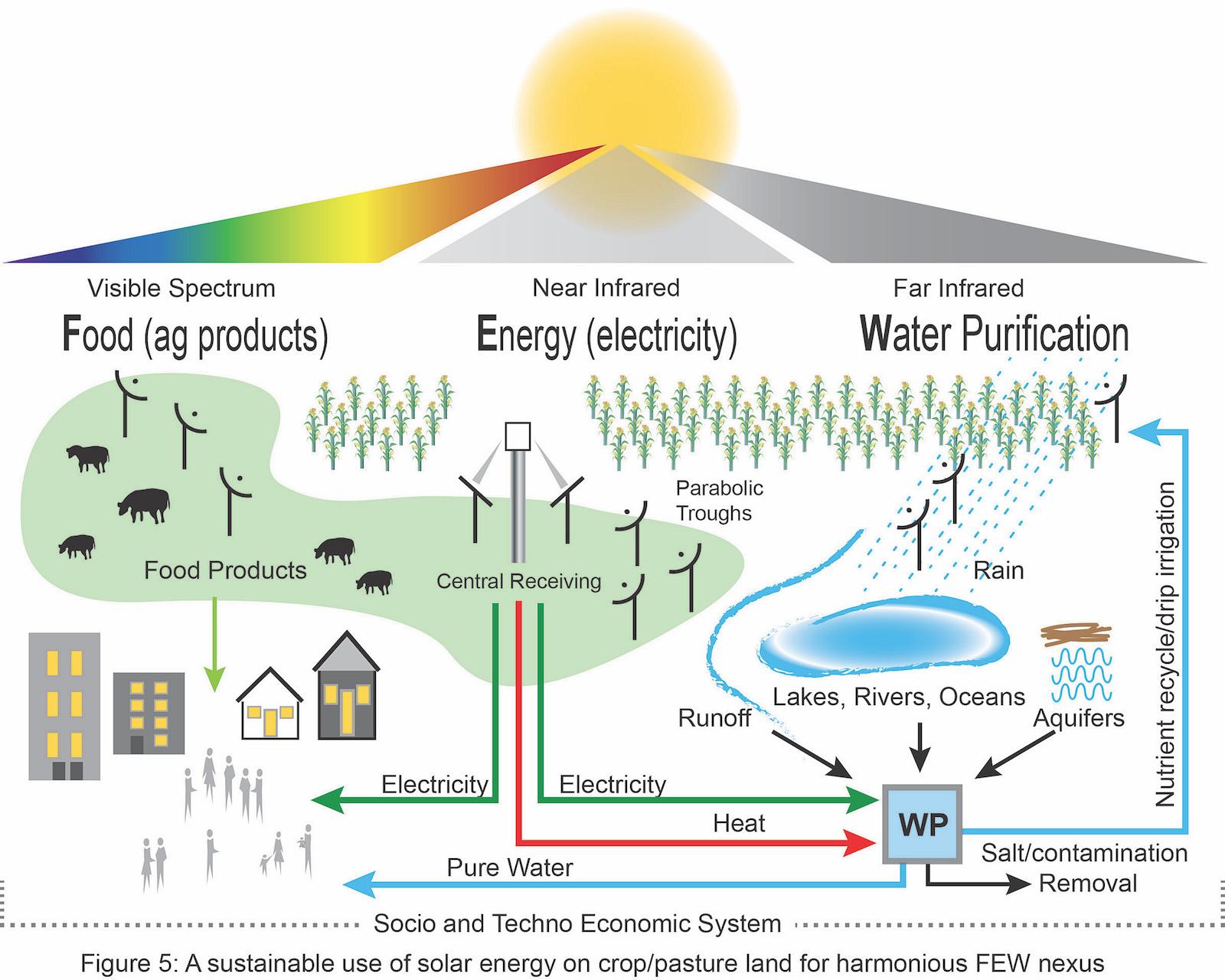Scientists Discover How To Use Entire Solar Spectrum To Sustain Life On Earth
To feed people on Earth generations from now, we’re going to need more electricity, purified water, heating capacity, and crop production. Scientists may have figured out how to do just that by utilizing three distinct spectrums of the sun.
Updated May 26 2019, 7:55 p.m. ET

To feed more than 10 billion people on Earth three generations from now, we’re going to need a whole lot more electricity, purified water, heating capacity, and crop production. To do so sustainably will require harnessing massive amounts of renewable energy.
Thankfully for us, the solar spectrum may be just the ticket. A new concept put forth by scientists seeks to meet energy, food, and water needs of a “full Earth” by harnessing different parts of sunlight’s spectrum, Phys.org reports.
Rakesh Agrawal, Purdue University's Winthrop E. Stone Distinguished Professor in the School of Chemical Engineering, is leading a research group that is looking into the system, which would have the capacity to maximize resource production from a specified tract of land. The process by which said system would utilize the full spectrum of sunlight was published last week in Scientific Reports in a paper written by Emre Gençer et al.
"This increase in population, coupled with rising per capita income and associated change in consumption habits, will put unprecedented stress on food, energy and water resources," Agrawal told Purdue University. "The grand challenge before us is to sustainably meet the needs of a full Earth using scarcer resources, and the sun is the key energy source to achieve this goal."
Tapping into the full solar spectrum requires a system capable of separating and harvesting three solar-spectrum segments best equipped for production of food, energy, and water treatment. Today, sunlight in any one spot is used for a singular purpose; i.e. energy production on solar panels (which cast shadows, dramatically reducing the potential for plant growth in the shadowed area), or agriculture to grow crops. This new design would use one space to do all three things by splitting the spectrum and harnessing its power for different tasks.
The photovoltaic designs being worked on by Agrawal and his team would transmit photons, reflect leftover photons within the solar spectrum to other, specialty solar cells that could create electricity and gather heat for things like power and water purification. This process would allow individual communities to be totally self-sufficient and independent from larger power grids—or could provide power to those power grids to serve other areas.
Water to be purified would be drawn from field runoff, oceans and other water bodies, and underground wells. The water could then be used for irrigation of crops or to serve urban centers. Contaminants removed from the water (such as salt) could be recycled or processed for other uses.
"With the three-way split, the entire spectrum is judiciously used for the production of food, energy and water resources," Agrawal told Purdue. "At the same time, the local generation of electricity will allow the use of microgrids in villages and provide a new paradigm for electricity generation and distribution. Local generation of power and clean water also is expected to reduce the long-distance transmission losses inherent in any power supply grid system."
